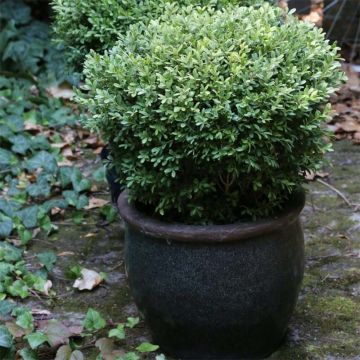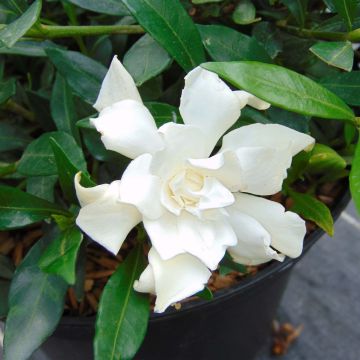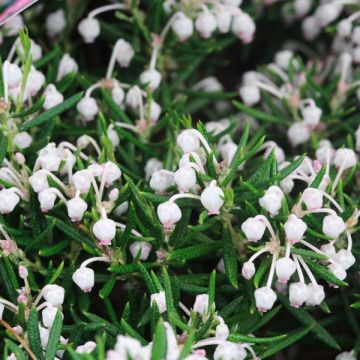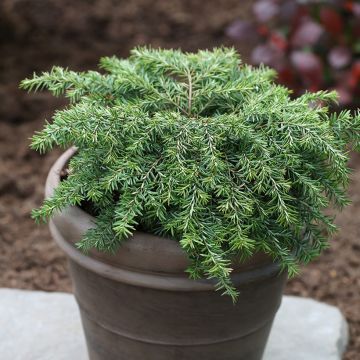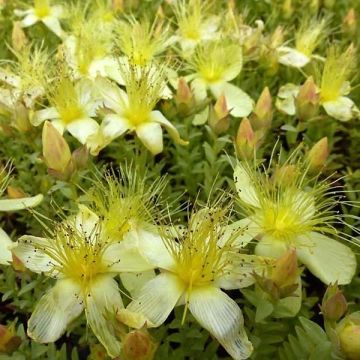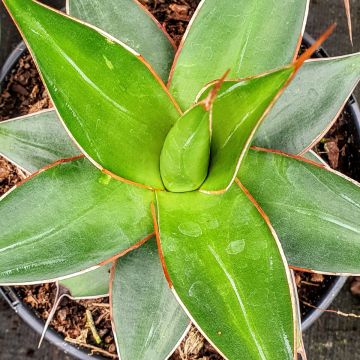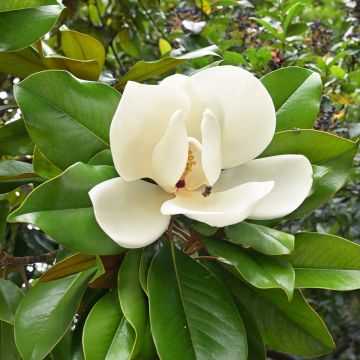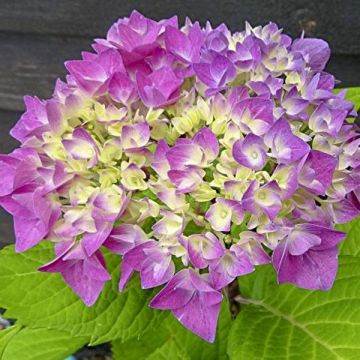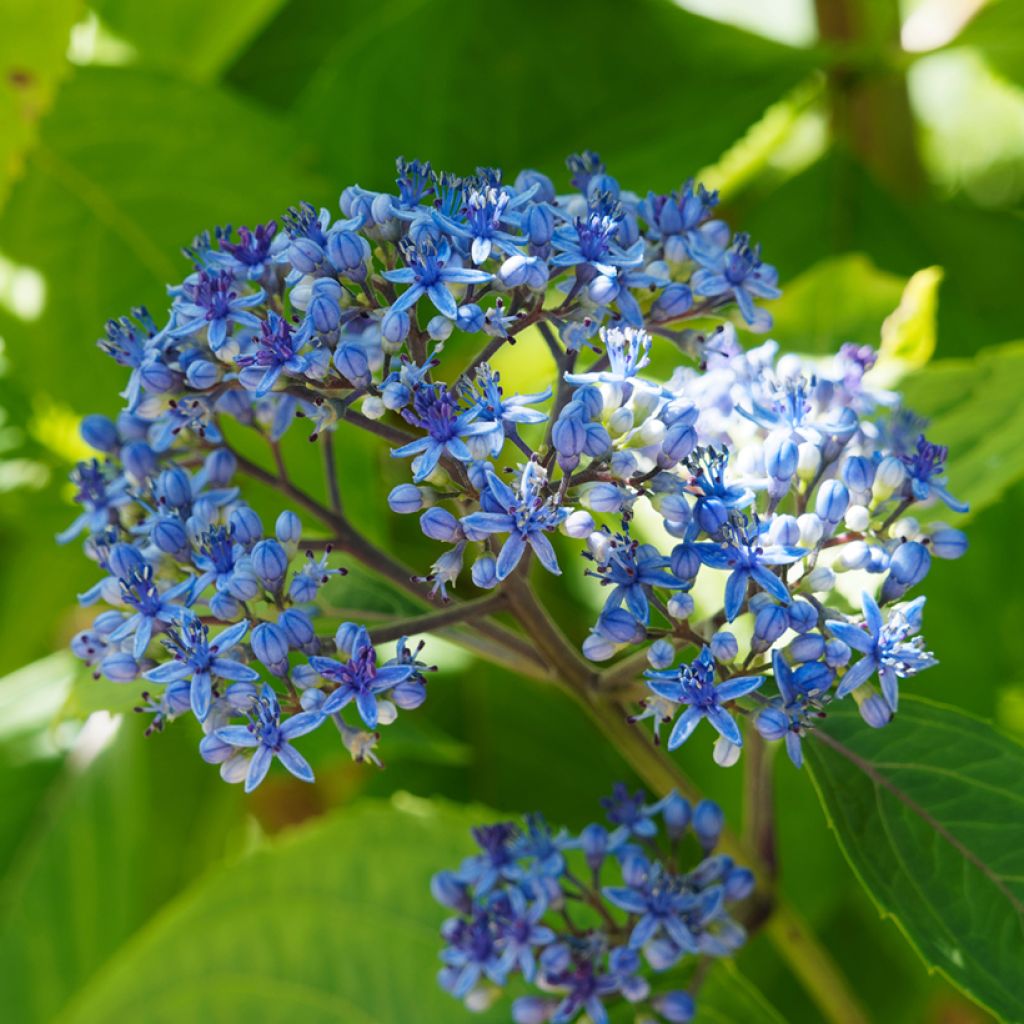

Dichroa versicolor Round Blue
Dichroa versicolor Round Blue
Dichroa versicolor Round Blue
Chinese Quinine
Very pleased
les asperas, 23/03/2024
This item cannot be shipped to the selected country
Delivery charge from €5.90
More information
Schedule delivery date,
and select date in basket
This plant carries a 24 months recovery warranty
More information
We guarantee the quality of our plants for a full growing cycle, and will replace at our expense any plant that fails to recover under normal climatic and planting conditions.
From €5.90 for pickup delivery and €6.90 for home delivery
Express home delivery from €8.90.
Does this plant fit my garden?
Set up your Plantfit profile →
Description
The Dichroa versicolor 'Round Blue' is derived from a charming Asian bush, decorative all year round, especially in winter when adorned with small fruits of intense midnight blue, gathered in clusters. This cousin of hydrangeas bears an elegant evergreen foliage and produces blueish, round and light panicles in late summer. Of modest size, with a round habit, it is suitable for small gardens. Quite rare in cultivation, it is a very pretty plant that thrives in non-limestone soil and in a mild and humid climate, and it will also have a great effect in a large pot on a partially shaded terrace. Its flowers are very beautiful in bouquets.
The Dichroa versicolor 'Round Blue' is a bush of the Hydrangeaceae family. It is a horticultural selection selected by Glyn Church at Woodleigh in New Zealand. The species is native to Asia (China, Himalayas). It has a bushy, rounded habit, and reaches about 1 m (3 ft 4 in) in all directions after 10 years. Its growth rate is medium. The foliage remains in winter. It consists of leaves reminiscent of hydrangeas, but more slender. They are lanceolate, finely toothed, slightly shiny, dark green and measure approximately 20 cm (7.9 in) long by 6 cm (2.4 in) wide. Flowering takes place in August-September, at the ends of the current year's branches. It takes the form of rounded clusters composed of numerous white floral buds resembling pearls. They open into tiny star-shaped flowers with 5 petals, more or less bluish depending on the nature of the soil, surrounding prominent stamens of a purplish pink colour. After pollination by pollinating insects, the nectar producing flowers give way to small round berries, 7 mm (0.3 in) in diameter, of a brilliant indigo blue, ripening in autumn. They are decorative, but not edible. This beautiful fruiting persists until winter if it escapes the appetite of birds. The hardiness of this Dichroa is estimated at -8°C (17.6 °F) at its peak for an established plant.
The Dichroa 'Round Blue' is particularly suitable for coastal gardens, spared by heavy frosts, but also by heatwaves. It is grown in partial shade, like most heathland shrubs. It can be planted with hydrangeas, Pieris, camellias and rhododendrons. It appreciates the same cool environments, in dappled sunlight, even at the base of large trees. To accompany it, consider shade-loving perennials such as ferns, Japanese anemones, and hostas.
Report an error about the product description
Dichroa versicolor Round Blue in pictures


Plant habit
Flowering
Foliage
Botanical data
Dichroa
versicolor
Round Blue
Hydrangeaceae
Chinese Quinine
China
Other Shrubs A to Z
Planting and care
To plant the 'Round Blue' Dichroa, choose a spot with non-chalky, neutral or acidic soil and where winter frost doesn't go below -8°C (17.6 °F). The plant does well in partial shade with a few hours of morning sun. In mild and temperate climates, planting can be done in spring or autumn in open ground. Note that the bush cannot withstand heat, drought, or limestone. If planting in a pot, do it in the spring.
Planting in the ground:
Dig a hole three times larger than the root ball in all directions. Add compost to the original soil and be careful not to bury the base of the plant while filling the hole. Use non-limestone water to water the plant and mulch it immediately. Make sure to water the plant regularly in dry summers. Protect the base of the plant with thick mulch and the branches with horticultural fleece in case of severe frost.
Planting in a pot:
Choose a pot with a diameter of at least 40 cm (15.7 in) and make sure it has drainage holes at the bottom. The pot should be well-drained with clay pebbles. Plant Dichroa in a substrate composed of 1/3 leaf compost, 1/3 garden soil, and 1/3 sand. Add three handfuls of slow-release organic fertiliser or compost. Mulch the base of the plant after planting and watering, always with non-limestone water. Add compost in March, June, and October. If you bring Dichroa into a cold greenhouse or slightly heated veranda in winter, water it twice a month. If you leave it outside, protect the bush with mulch and wrap the pot and branches in a horticultural fleece if there's a forecast of frost.
Planting period
Intended location
Care
-
, onOrder confirmed
Reply from on Promesse de fleurs
Shrubs for pots
Haven't found what you were looking for?
Hardiness is the lowest winter temperature a plant can endure without suffering serious damage or even dying. However, hardiness is affected by location (a sheltered area, such as a patio), protection (winter cover) and soil type (hardiness is improved by well-drained soil).

Photo Sharing Terms & Conditions
In order to encourage gardeners to interact and share their experiences, Promesse de fleurs offers various media enabling content to be uploaded onto its Site - in particular via the ‘Photo sharing’ module.
The User agrees to refrain from:
- Posting any content that is illegal, prejudicial, insulting, racist, inciteful to hatred, revisionist, contrary to public decency, that infringes on privacy or on the privacy rights of third parties, in particular the publicity rights of persons and goods, intellectual property rights, or the right to privacy.
- Submitting content on behalf of a third party;
- Impersonate the identity of a third party and/or publish any personal information about a third party;
In general, the User undertakes to refrain from any unethical behaviour.
All Content (in particular text, comments, files, images, photos, videos, creative works, etc.), which may be subject to property or intellectual property rights, image or other private rights, shall remain the property of the User, subject to the limited rights granted by the terms of the licence granted by Promesse de fleurs as stated below. Users are at liberty to publish or not to publish such Content on the Site, notably via the ‘Photo Sharing’ facility, and accept that this Content shall be made public and freely accessible, notably on the Internet.
Users further acknowledge, undertake to have ,and guarantee that they hold all necessary rights and permissions to publish such material on the Site, in particular with regard to the legislation in force pertaining to any privacy, property, intellectual property, image, or contractual rights, or rights of any other nature. By publishing such Content on the Site, Users acknowledge accepting full liability as publishers of the Content within the meaning of the law, and grant Promesse de fleurs, free of charge, an inclusive, worldwide licence for the said Content for the entire duration of its publication, including all reproduction, representation, up/downloading, displaying, performing, transmission, and storage rights.
Users also grant permission for their name to be linked to the Content and accept that this link may not always be made available.
By engaging in posting material, Users consent to their Content becoming automatically accessible on the Internet, in particular on other sites and/or blogs and/or web pages of the Promesse de fleurs site, including in particular social pages and the Promesse de fleurs catalogue.
Users may secure the removal of entrusted content free of charge by issuing a simple request via our contact form.
The flowering period indicated on our website applies to countries and regions located in USDA zone 8 (France, the United Kingdom, Ireland, the Netherlands, etc.)
It will vary according to where you live:
- In zones 9 to 10 (Italy, Spain, Greece, etc.), flowering will occur about 2 to 4 weeks earlier.
- In zones 6 to 7 (Germany, Poland, Slovenia, and lower mountainous regions), flowering will be delayed by 2 to 3 weeks.
- In zone 5 (Central Europe, Scandinavia), blooming will be delayed by 3 to 5 weeks.
In temperate climates, pruning of spring-flowering shrubs (forsythia, spireas, etc.) should be done just after flowering.
Pruning of summer-flowering shrubs (Indian Lilac, Perovskia, etc.) can be done in winter or spring.
In cold regions as well as with frost-sensitive plants, avoid pruning too early when severe frosts may still occur.
The planting period indicated on our website applies to countries and regions located in USDA zone 8 (France, United Kingdom, Ireland, Netherlands).
It will vary according to where you live:
- In Mediterranean zones (Marseille, Madrid, Milan, etc.), autumn and winter are the best planting periods.
- In continental zones (Strasbourg, Munich, Vienna, etc.), delay planting by 2 to 3 weeks in spring and bring it forward by 2 to 4 weeks in autumn.
- In mountainous regions (the Alps, Pyrenees, Carpathians, etc.), it is best to plant in late spring (May-June) or late summer (August-September).
The harvesting period indicated on our website applies to countries and regions in USDA zone 8 (France, England, Ireland, the Netherlands).
In colder areas (Scandinavia, Poland, Austria...) fruit and vegetable harvests are likely to be delayed by 3-4 weeks.
In warmer areas (Italy, Spain, Greece, etc.), harvesting will probably take place earlier, depending on weather conditions.
The sowing periods indicated on our website apply to countries and regions within USDA Zone 8 (France, UK, Ireland, Netherlands).
In colder areas (Scandinavia, Poland, Austria...), delay any outdoor sowing by 3-4 weeks, or sow under glass.
In warmer climes (Italy, Spain, Greece, etc.), bring outdoor sowing forward by a few weeks.


































